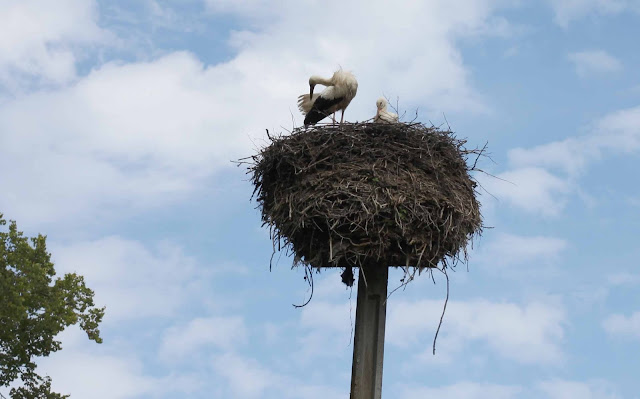Kattohaikara viihtyy Virossa – risumaja puhelintolpan päässä kelpaa asunnoksi kesästä toiseen
Haikarapariskunta pesimäpuuhissa Virossa. Kuvat: Sirpa Pääkkönen Kun Virossa ajelee autolla, vastaan tulee metsiä, peltoja ja paljon koskematonta luontoa. Välissä on pieniä kyliä, ja silloin tällöin silmiin osuu joku hylätty kolhoosi muistona Viron Neuvostoajoista. Reiteillä on myös paljon lintuja. Toisinaan voi bongata kurjen, mutta Virossa mantereen puolella lentelee ennen muuta paljon haikaroita. Niiden bongaaminen on hauskaa. Joskus olen laskenut parin sadan kilometrin automatkalla pari sataa kattohaikaraa. Ne kävelevät pelloilla sammakkojahdissa tai pariskunnat majailevat pesässä sähkötolpan nokassa ruokkimassa poikasiaan. Risumajat ovat hauskan näköisiä, koska haikara ei ole viimeisen päälle järjestystä rakastava lintu. Se jatkaa pesän rakennustaan, kun se palaa talven vietosta Afrikan lämmöstä. Useimmat Viroon palaavat kattohaikarat talvehtivat Egyptissä. Sama risupesä kelpaa haikarapariskunnan kodiksi vuosien ajaksi. Virolaiset lintuharrastaj...



Kommentit
Lähetä kommentti